Hunger ‘Inevitable’ for Millions Made Homeless by Conflict in Lebanon and Beyond
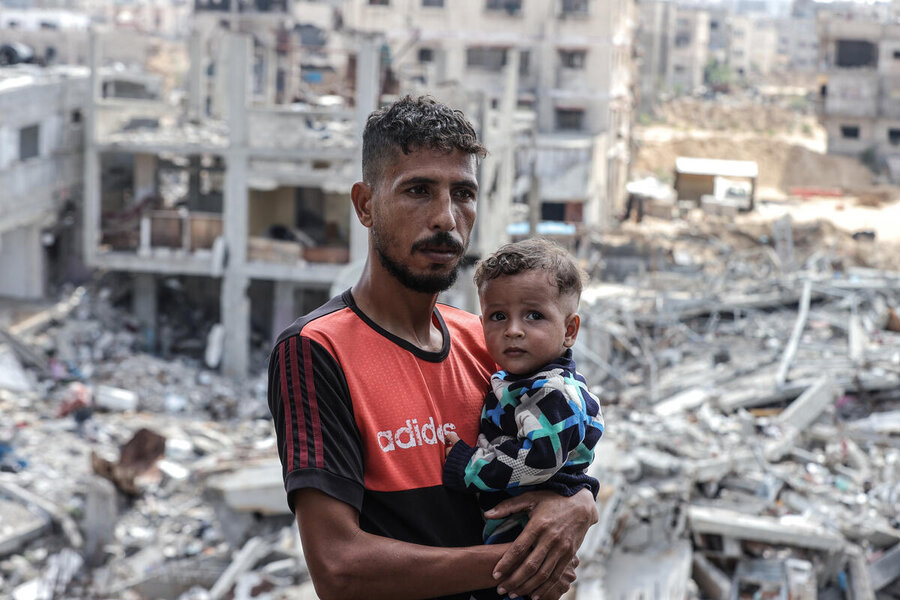
Corinne Fleischer, Regional Director for the Middle East, North Africa and Eastern Europe, explains how the World Food Programme (WFP) is stretching every muscle to reach those in need, in the face of stubborn obstacles including lack of funding and access.
First of all, can you convey the sheer impact of this emergency for millions of people?
The first issue is displacement. The region already had 6 million Syrian refugees. In Gaza, almost the entire population has been displaced multiple times – that’s around 2 million people.
In Lebanon, almost 1 million people are already displaced amid the spread of conflict. In addition, Sudanese refugees are coming to the region, into Egypt, into Libya, to escape another humanitarian disaster in its own right. You put all this together, that’s a massive uprooting of people.
“People are absolutely at breaking point”
There are 460,000 people going from Lebanon into Syria. It’s heartbreaking when you listen to Syrian families who have to come back to the country after years of being refugees. They go back into communities who generously receive them.
But these are communities where WFP has previously had to cut 80 percent of our beneficiaries because of lack of funding. These families are supporting others with the nothing they have. People are absolutely at breaking point.
How is this translating into a hunger crisis?
Displacement means not only immense human suffering and loss of livelihoods. It means hunger. We’re seeing hunger rates going up in Gaza, in Lebanon, in Syria and beyond.
Famine is a real possibility in parts of Gaza over the next six months, and over 90 percent of Gaza’s population is expected to face acute food insecurity [as per latest IPC analysis].
Across the region, hundreds of thousands of families have lost everything – their homes, livelihoods, belongings and savings. Shelters are overwhelmed and people are desperately seeking refuge wherever they can.
Hunger is inevitable amid such conditions and humanitarian needs are growing by the day.
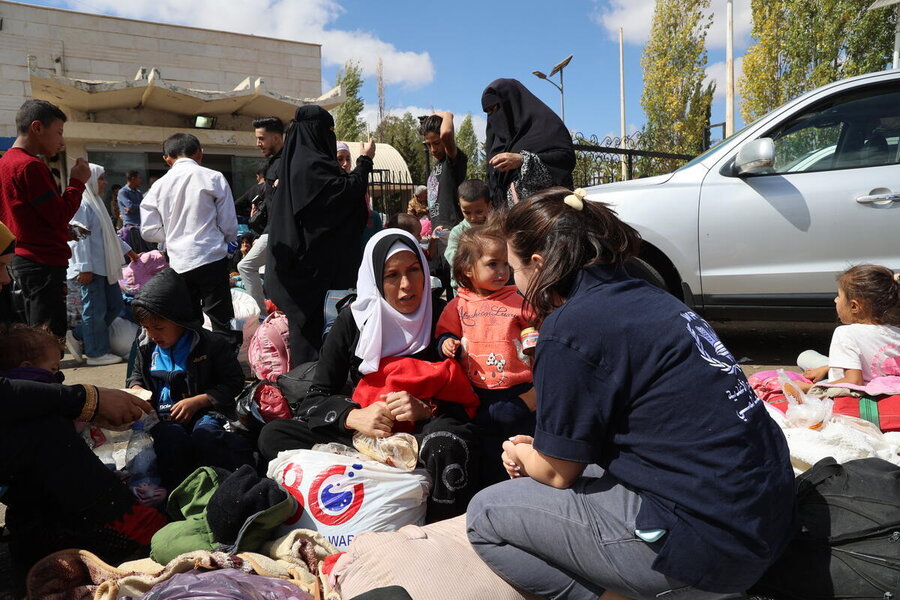
What is the economic impact on the region and on people at large?
The war in Ukraine has broken the camel’s back, as this region imports so much food. Prices had already gone through the roof, and people were unable to buy food.
This war is making things even worse. It affects incomes for governments, for companies and for people. On top of the immense suffering, jobs are being lost and prices are going up. The whole region and many, many families are struggling.
How can WFP support those affected?
We have responded to seven sudden-onset emergencies in this region in the last two years. We have shown that we are here for those who depend on our support.
In Lebanon, we are scaling up our emergency food assistance to reach up to 1 million people, distributing hot meals, ready-to-eat rations, food parcels, fresh bread, sandwiches and emergency cash.
Kitchens and hot-meal operations have been set up in north and central Lebanon to prepare light meals for those seeking safety in shelters. We’ve also resumed regular cash programmes.
“We have shown that we are here for those who depend on our support.”
In October, in Gaza, we only reached 45 percent of the 1.1 million people we targeted, with reduced assistance, due to no access. We have managed to provide 8.8 million meals to over 350,000 people despite the limited stocks that we have inside Gaza.
In Syria, we are providing food assistance wherever possible, including at border crossings, host centres and host communities. We’re also supporting Sudanese refugees in Egypt and in Libya with food assistance.
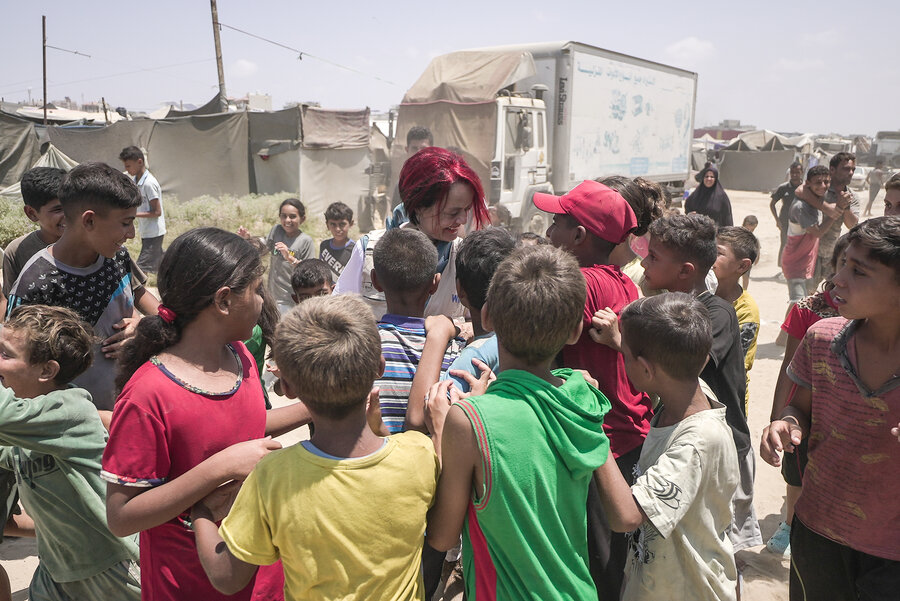
How can we ensure an effective response in such a challenging environment?
It’s about being prepared. Before the escalation in Lebanon, we pre-placed food, IT equipment and storage units, in anticipation that we might not be able to come in after that. We’re testing different supply routes into Lebanon, so if one or the other is closed, we have other options to get in.
Across the region, we looked at our plans: how many people do we expect to be displaced inside and across borders, where is our food, do we have the food to respond in the region, what are our supply routes?
Because whenever you have war, ports are closed, crossing points are closed and we need to make sure we can get in. We were prepared for that.
But with the volatility in this region, we need to prepare beyond this. We are looking at warehouses in three locations in the region with ready-to-eat food available, to reduce the lead time from the moment we buy food and until it’s packed, assembled and shipped.
This can reduce the delivery times from 100 days to 3 days – which is paramount when the next emergency hits.
What is our message to donors?
First and foremost, this region needs peace. That’s out first message. If not, this crisis will exceed the financial and operational capacity of the international community, because millions of people may move through borders, while supply chains are going to be disrupted.
The second message is: Thank you for your funding, because we are very, very grateful for the generosity of our donors who recognize that we do deliver in these wars. But we need much more.
“We have our operations in place, and are ready to step in and step up.”
Donors have come in generously for some operations, though not for others – we’re not getting enough for Syria. We have stepped up but that’s with the little funding we have from our regular and ongoing work – which we need to replenish.
Then thirdly, we need our donor governments to support us with the access that we need. We have our operations in place, and are ready to step in and step up.
What effect are these access restrictions having on the humanitarian operation?
In Gaza, it’s very complicated to get through with trucks. We need many, many trucks to get through with our food and right now it’s just a trickle of deliveries.
It’s a double problem because we are not bringing in food, while at the same time, the private sector is only able to bring in about half of what they used to. And so there is almost nothing in the market anymore.
When I was there, one-and-a-half months ago, there was fresh fruit in the market. There were vegetables in the market in Deir al-Balah [city in central Gaza Strip]. Not everybody could afford it but it was there. Now the markets are empty. There is no food coming in.
Food is not available and we need to get through to bring it to the people who desperately need it.
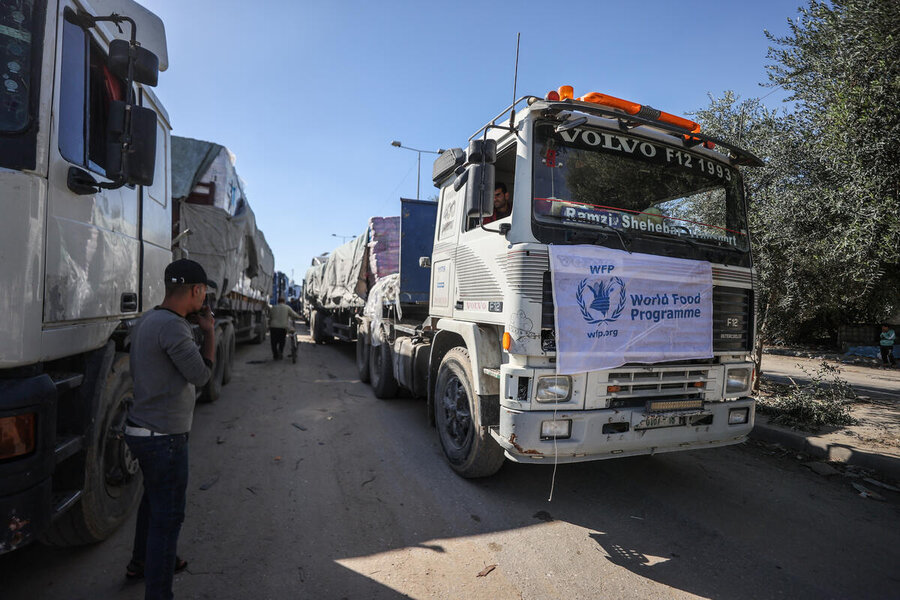
What would be the impact of a ceasefire on our humanitarian operations?
Whenever we have access and bring in sufficient food, hunger rates go down. We have shown with the first and only ceasefire so far in Gaza, which was almost a year ago, that we were able to manage and stabilize the hunger situation in northern Gaza.
We’ve seen it with the latest IPC. There was a slight improvement in the hunger situation because we had better access to bring in sufficient food in July and August.
But now in October, we’re hardly bringing in anything. We are not reaching people. The risk of famine prevails and we’re going in that direction if we can’t get access to people.
How are local staff coping, when their own lives and families are affected so directly?
Our staff have to make this very difficult choice every day: Do I take care of my family, or do I go to work? And they come to work, because they say: There are people worse off than we are, and it gives us a lot of pride to be there for them.
I have huge respect for our colleagues in these places, who show up every day for work while they are as affected as the rest of the population. We hope this crisis will stop. Because people need a break. And our local staff need a break. They and their families are affected too.
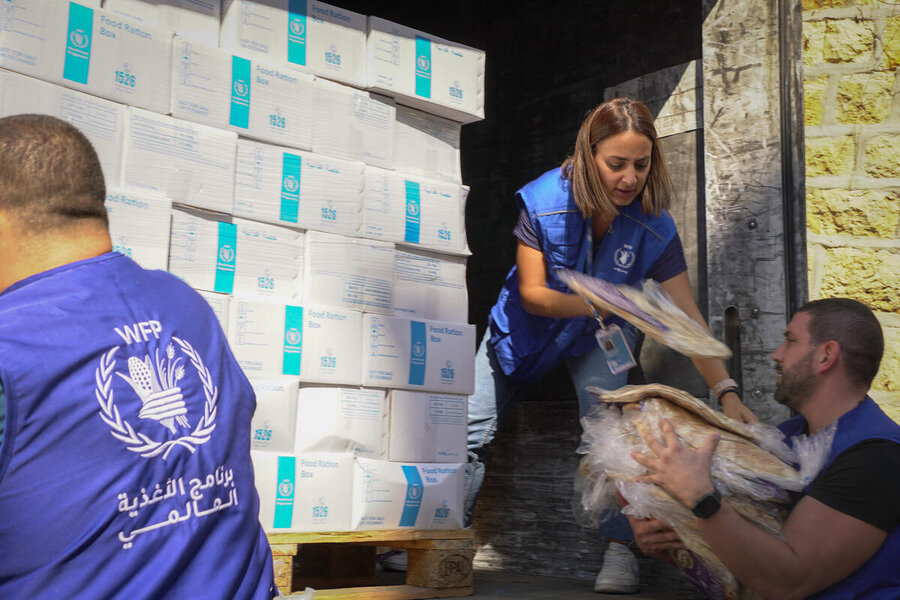
You worked in Syria as Country Director during an intensive conflict. Are there lessons WFP can learn from that time?
WFP has supported Syrian families for the last 13 years to make sure they have food on the table. But we owe it to the people to help them get back on their feet, and we have proven that we have the tools to achieve that – with high impact, and on a large scale.
In Deir Ez-Zor, WFP worked with FAO [the Food and Agriculture Organization] on the rehabilitation of the irrigation systems, to get the water running again from the river to the large networks of canals, so the farmers could water their land and produce more crops.
And we’ve had amazing results: reduced humanitarian needs, reduced negative coping strategies, a ten-times increase in wheat harvest, creation of job opportunities – both on and off-farm – which resulted in more people returning to the area.
“With the suffering that I have seen in Gaza, I did not expect to see kids smiling…but their smiles are very sad.”
Instead of having to feed the same people with ever-reducing funding, people don’t need us anymore. Where the conditions are right, this is the impact we can have. But we need peace and stability first of all, and we need to get activities funded. We need to do it as quickly as possible.
From your travels in the region and what you’ve seen on the ground, what sticks with you the most?
It’s the kids. Wherever we go, they come to us. They adapt to situations, they smile and they play. With the suffering that I have seen in Gaza, I did not expect to see kids smiling. Yes they did, but their smiles are very sad.
Their eyes are very sad, so you see through that the immense suffering they are going through, with no future ahead of them for now, and that is heartbreaking.
Significant funding shortfalls threaten WFP’s ability to maintain emergency food assistance for people affected by the recent escalation.
We urgently need:
- Syria: US$50 million to reach 480,000 people until the end of March 2025.
- Lebanon: US$116 million to provide emergency food assistance for up to 1 million people until end 2024.
- Gaza and West Bank: US$178 million until end of 2024.
Learn more about WFP’s emergency response in Syria, Lebanon and Palestine.
Source: https://human-wrongs-watch.net/2024/11/25/hunger-inevitable-for-millions-made-homeless-by-conflict-in-lebanon-and-beyond/
Anyone can join.
Anyone can contribute.
Anyone can become informed about their world.
"United We Stand" Click Here To Create Your Personal Citizen Journalist Account Today, Be Sure To Invite Your Friends.
Before It’s News® is a community of individuals who report on what’s going on around them, from all around the world. Anyone can join. Anyone can contribute. Anyone can become informed about their world. "United We Stand" Click Here To Create Your Personal Citizen Journalist Account Today, Be Sure To Invite Your Friends.
LION'S MANE PRODUCT
Try Our Lion’s Mane WHOLE MIND Nootropic Blend 60 Capsules
Mushrooms are having a moment. One fabulous fungus in particular, lion’s mane, may help improve memory, depression and anxiety symptoms. They are also an excellent source of nutrients that show promise as a therapy for dementia, and other neurodegenerative diseases. If you’re living with anxiety or depression, you may be curious about all the therapy options out there — including the natural ones.Our Lion’s Mane WHOLE MIND Nootropic Blend has been formulated to utilize the potency of Lion’s mane but also include the benefits of four other Highly Beneficial Mushrooms. Synergistically, they work together to Build your health through improving cognitive function and immunity regardless of your age. Our Nootropic not only improves your Cognitive Function and Activates your Immune System, but it benefits growth of Essential Gut Flora, further enhancing your Vitality.
Our Formula includes: Lion’s Mane Mushrooms which Increase Brain Power through nerve growth, lessen anxiety, reduce depression, and improve concentration. Its an excellent adaptogen, promotes sleep and improves immunity. Shiitake Mushrooms which Fight cancer cells and infectious disease, boost the immune system, promotes brain function, and serves as a source of B vitamins. Maitake Mushrooms which regulate blood sugar levels of diabetics, reduce hypertension and boosts the immune system. Reishi Mushrooms which Fight inflammation, liver disease, fatigue, tumor growth and cancer. They Improve skin disorders and soothes digestive problems, stomach ulcers and leaky gut syndrome. Chaga Mushrooms which have anti-aging effects, boost immune function, improve stamina and athletic performance, even act as a natural aphrodisiac, fighting diabetes and improving liver function. Try Our Lion’s Mane WHOLE MIND Nootropic Blend 60 Capsules Today. Be 100% Satisfied or Receive a Full Money Back Guarantee. Order Yours Today by Following This Link.






